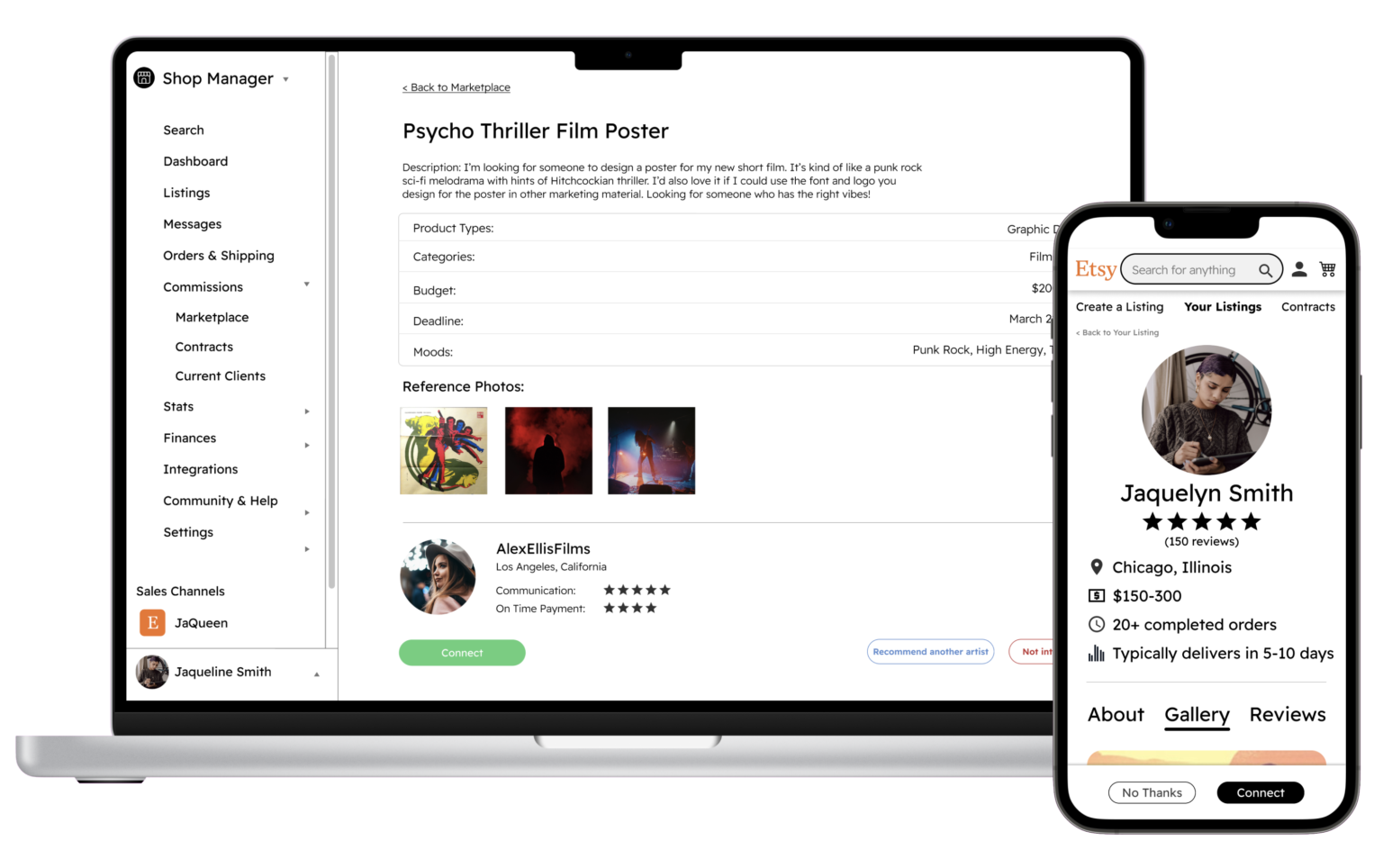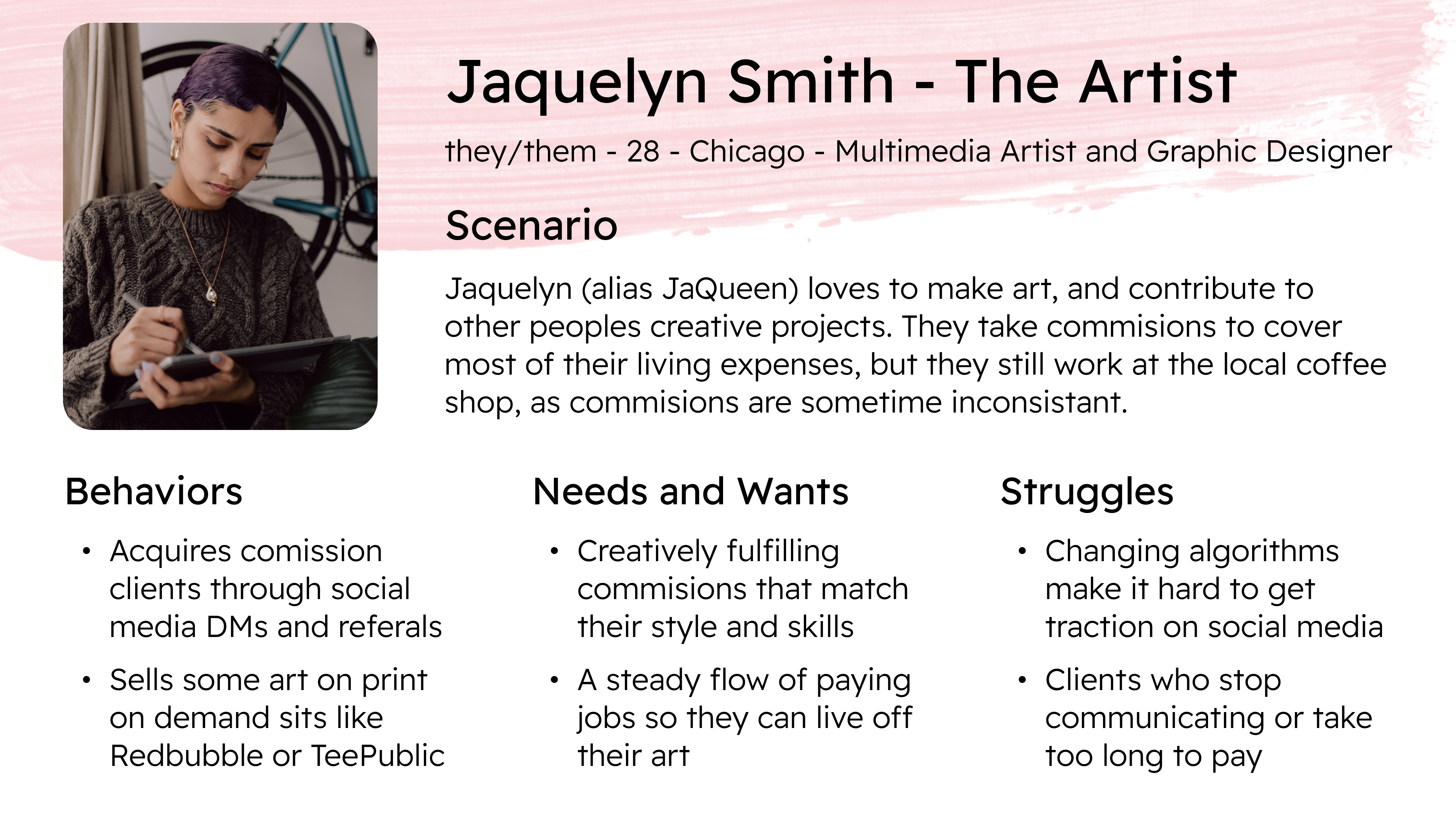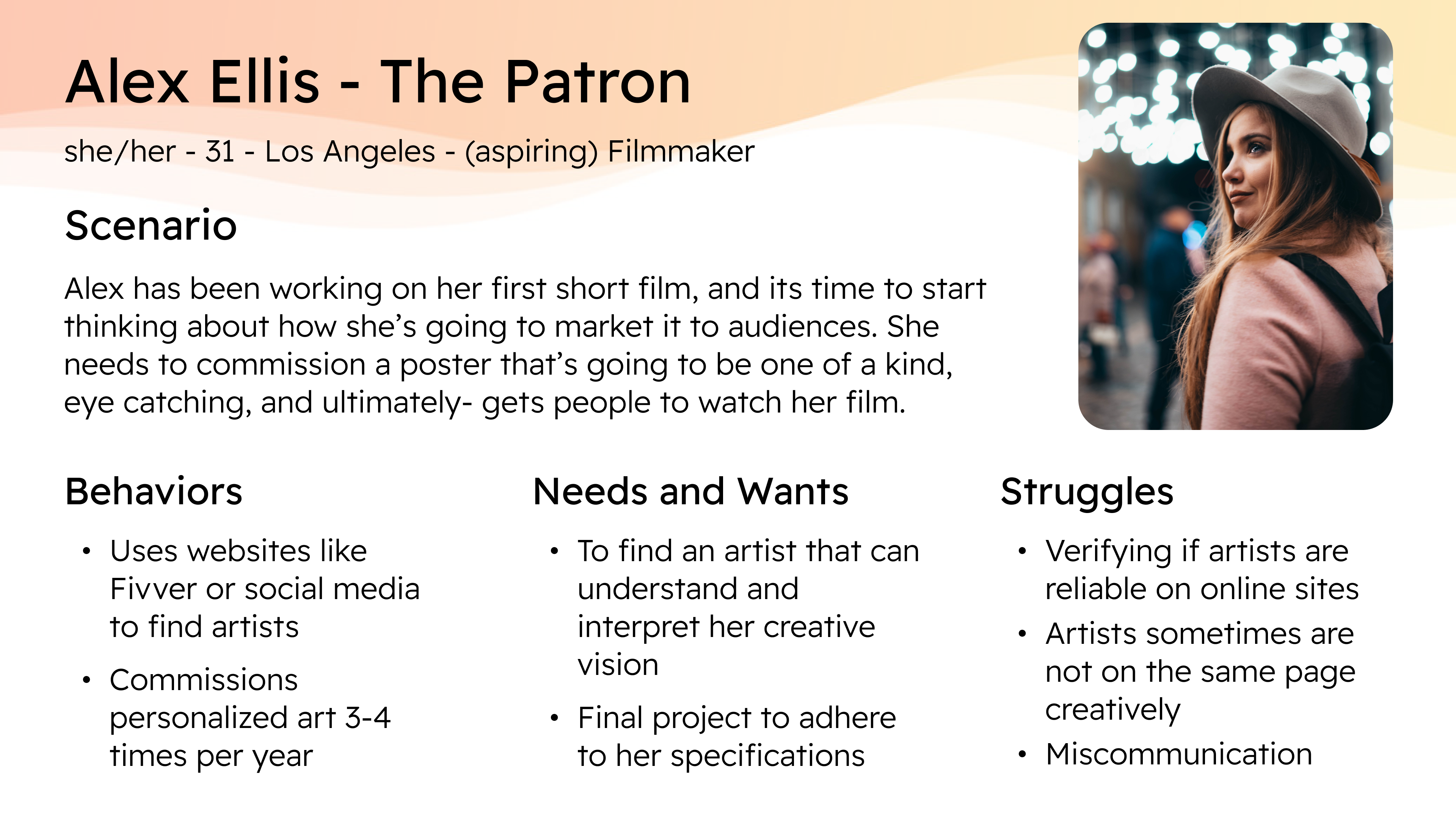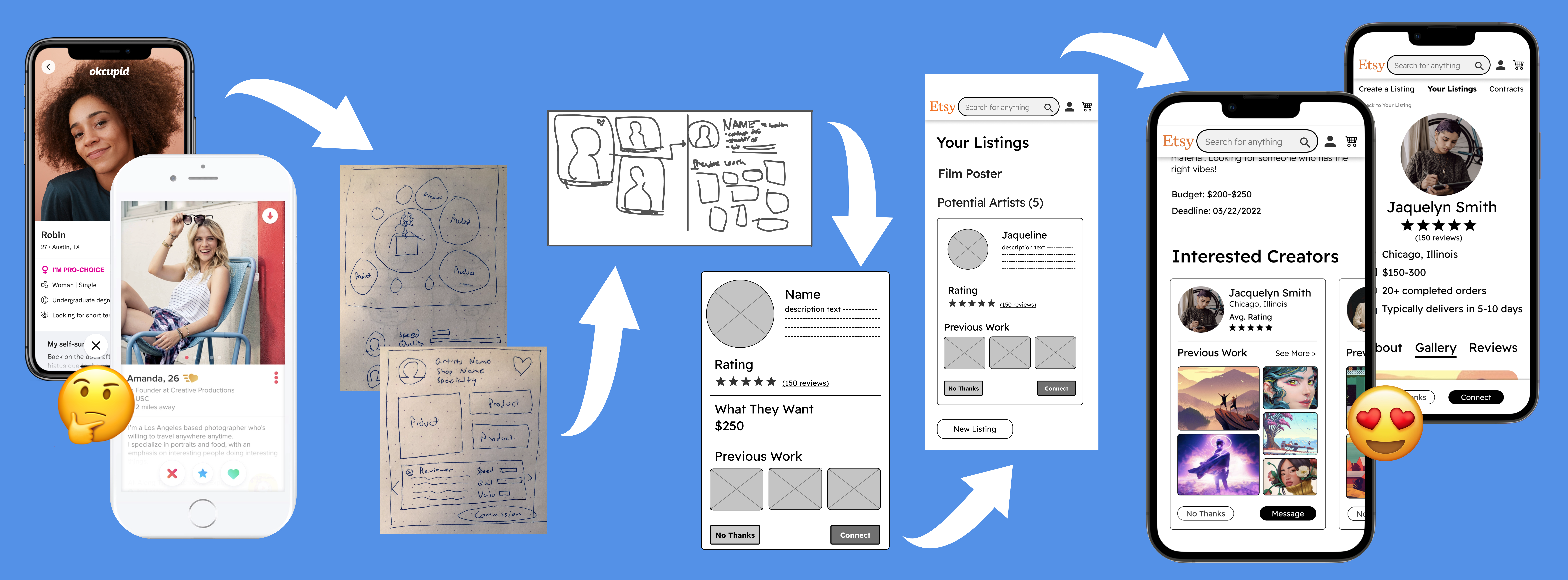
Adding Commissions to Etsy
Team
Speculative
Challenge
For this project, we were tasked with creating a feature for Etsy where customers can commission personalized products from artists, and the artists can manage the business elements and communication with the client throughout the creative process.
This would formalize and incorporate a process that a lot of artists currently manage on their own while helping the purchaser feel more secure in the transaction.
Solution
With a focus on how important the relationship is between an artist and patron when commisioning something personal, we turned to the design patterns of dating apps to help us build trust and emotional connection.
We also built a robust means of sending, signing, and counter signing contracts, as well as ways for the artist to provide updates and maintain communication with the patron.
The Nitty Gritty
Objectives
- Add a feature to Etsy to allow patrons to commission original work from artists
- Make the feature responsive on mobile and desktop
Breakdown
Roles: Research, Interface Design
Team: Five person team
Scope: Two-week speculative sprint
Acquired Skills
- Complex Figma Prototyping
- Design Library Creation
- Responsive Design
Reinforced Skills
- User Interviews
- Comparative Analysis
- Interface Design
Tools
- Figma
- Maze
A Tale of Two Users
From the start of the project, we knew we would have to approach this project from two perspectives- the artist and the patron. After conducting interviews with 5 artists and 5 people who frequently commission art online, we were able to put together personas that reflected the most important behaviors, needs, and struggles of our two users.
Once we understood our users, it was time to take everything we had learned about the process of commissioning art and understand it as a combined journey between an artist and a patron. It may look a little like a mess of lines and shapes, but there’s a really important story here, and the key to our features focus.
Each part of this diagram where a blue line crosses from one user experience to the other is a part of this process where the responsibility for the project switches hands. When we look at these moments in the context of Jaquelyn and Alex’s struggles, these are the key opportunities for us to alleviate the burdens of uncertainty and miscommunication. These are the moments where our feature has the opportunity to solve Alex and Jaquelyn’s problems.
Inspiration
Take a look at some of these quotes we pulled during our interviews patrons and artists.
From a Patron
“I can’t have a conflict of creative vision with an artist. I need the artist to be on the same page as me for the direction of the design. So when it comes down to picking an artist, trust and communication are really important to me.“
From an Artist
“I like to keep an active back and forth of drafts and ideas throughout the process. But at the end of the day, the patron just has to trust me to execute their vision. I want to do everything I can to give them the best experience I can.“
There’s a clear overlap, not in the technical process of commissioning art, but in the emotional process. We realized that the handoffs we had identified throughout User Flow weren’t just moments where the UI needed to accomplish a task. They were moments where the UI needed to help both users feel a connection.
Trust? Communication? Connection? Where else could we turn but the world of dating apps!
Obviously, there were some limitations as most dating apps are native, and we were designed strictly for the web, but we carried over a few key design elements. Clear visuals, substantial metadata, easy ways to learn more, and simple wording and interface for what comes next. Rather than mire the process in complicated UI, we went with “Message” “Connect” and “No Thanks” in clear buttons on the bottom of the artist card and page.
Final Designs
Artist Desktop
Artist Mobile
Patron Mobile
Patron Desktop
Next Steps
One of the places we’d love to take this design in the future is into the Etsy app itself, and flush out the visual and interaction design for the process of choosing artists and contracts. We would love for there to be a way for an artist who is not interested in a project to be able to recommend an artist that they think would be a better fit. As well, we want to build in a way for a patron to request a specific artist.
We’d also love to add some more options for artists that help the business side of their work. A few examples we thought of were making it easy to quickly pull contracts, invoices, and communications over a project into downloadable PDF’s.
Finally, we found that a lot of patrons find artists through social media and recommendations. We’d love to add more functionality to connect the commission system to this process, to help patrons find artists and artists reach patrons.
Reflection
This project was a really interesting look at a kind of “enterprise”-lite design. Throughout, our primary concern was on the transactional elements, making sure we adhere to the standards of the industry and making sure both parties felt like they could trust the process. Even still, we found some really critical moments in the emotional journey that we had to design for as well.
- When researching and designing for two different groups of users that will interact through your product, the most important parts of the design occur when their journeys overlap. There needs to be both consistency and consideration for the needs of each party.
- We learned way more from Tinder and Hinge than we did from UpWork or Thumbtack. Design inspiration can come from anywhere, and often times an emotional comparator can lead to more valuable insights than a direct competitor.



